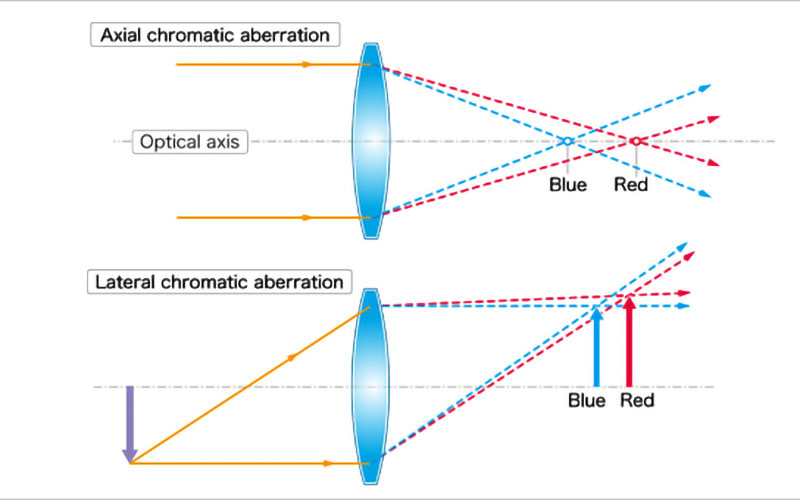

Moreover, these are most evident along the contrasty edges where there is a huge difference in the intensity of light. These aberrations are most evident in lenses with very wide apertures and using narrow aperture values can minimise the effect of longitudinal chromatic aberration. This can result in colour fringing not only at the edges of the subject but also on the subject itself, because of colours being focused at the front and/or back of the focal point – as a result of this, one part of the image may show a green colour fringing, another part a red colour and so on, and other areas neutral. It focuses on one or more colours either to the front or back of the focal point. This is because, the lens is not able to focus the different colours on to the focal point, which is the sensor in our case. Light gets refracted when passing from one medium to another and this phenomenon occurs when the different wavelengths of light do not converge at the focal point of the lens after refraction on passing through the glass, but converge at different points along the same axis (optical axis), which is also called “ focus shift” ( different planes, but the points fall on the same axis at different points, see illustration below). There Are Two Types Of Chromatic Aberration: Shooting scenes with high contrast, for example, shooting against the light or shooting against a very bright background.Using cheaper lenses that have low-quality glass, old lenses and/or cheap converters.Some reasons why aberration can occur are: No lens is a hundred per cent perfect and this effect is different in different lenses as the glass and construction vary. When there are defects in the way the lens is manufactured, wavelengths get refracted at a slightly different angle than they usually should and as a result, some lenses are unable to bring all the wavelengths into a single point and this happens due to the curvature of the lens.Īs a result of the above, colour fringing (such as purple fringing) occurs and the resulting photograph looks blurred with noticeable coloured fringes along the edges of your subject. We know white light is a combination of various wavelengths (colours) of light and we also know that when light passes through a prism, it gets dispersed into its constituent colours as seen in the image below. Image by Dahlia Why Does Chromatic Aberration Occur? Image by Dahlia Here is a highly magnified crop to show the effect of aberration clearly. This is aberration in the 18-55mm kit lens, shot at f/9. In this image, you can clearly see the green, purple and blue fringing. Transverse chromatic aberration looks like a coloured halo or colour fringe around your subject and, for longitudinal aberration there are colours in many parts of the frame beside the edges of the subject – we will see why in a minute. What Does Chromatic Aberration Look Like? This is most evident around objects where there is high contrast, that is dark edges close to very bright areas. The dispersed light contains different wavelengths and when these are not focused on to a particular point after leaving the lens and reaching the sensor0, the resulting image can look blurry rather than sharp with the edges having colours like magenta, green, etc. What Is Chromatic Aberration?Īs we discussed above, chromatic aberration is colour fringing which occurs when light enters the camera, gets dispersed and does not converge to a point.
#CHROMATIC ABERRATION HOW TO#
In this article, we will teach you how to fix it. If you find chromatic aberration in your images, do not panic as it is quite easy to minimise or fix. This is common in cheaper lenses, but are also present in some expensive lenses. It is a coloured blurry effect seen along the edges of your subject, created when a camera doesn’t or cannot focus all colours onto the same point. A simple way to fake this effect, and render it as a quick full-screen post-process, is to apply an offset to each color channel in a fragment shader.īy using a different offset for each channel, you can achieve a reasonable facsimile of the desired effect.Chromatic aberration is also called colour fringing and is a fringing effect caused by the refraction of different wavelengths of light at slightly different angles than the norm that results in failure to focus all the colours to a single point in our case, the focal point. Chromatic aberration is caused when a lens can't focus every color to the same focal point.


 0 kommentar(er)
0 kommentar(er)
